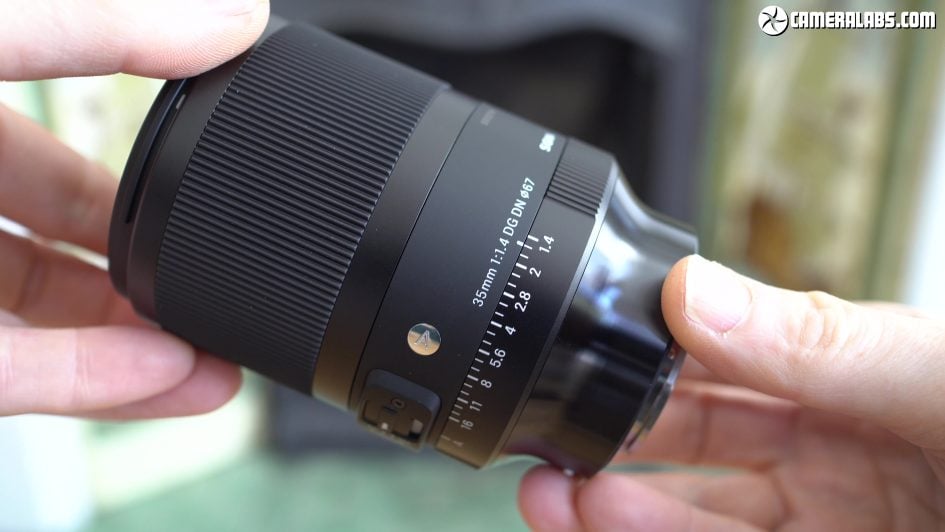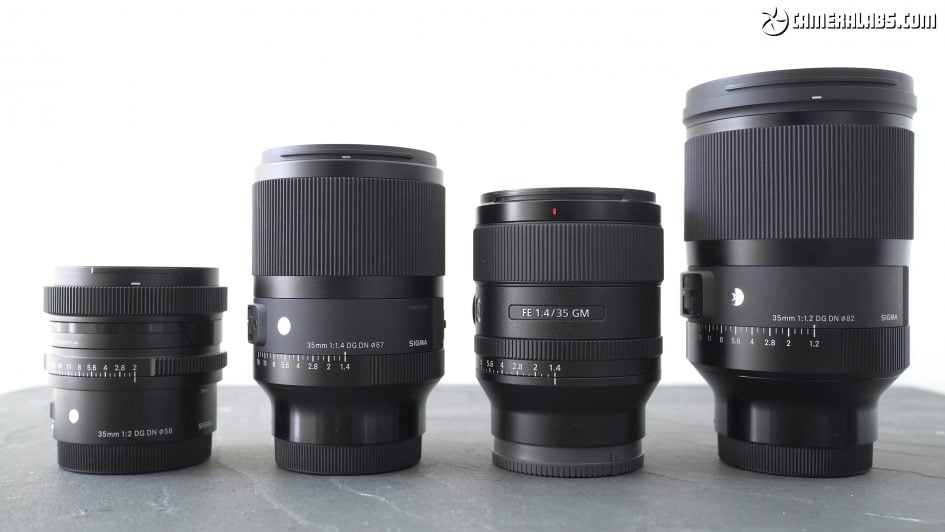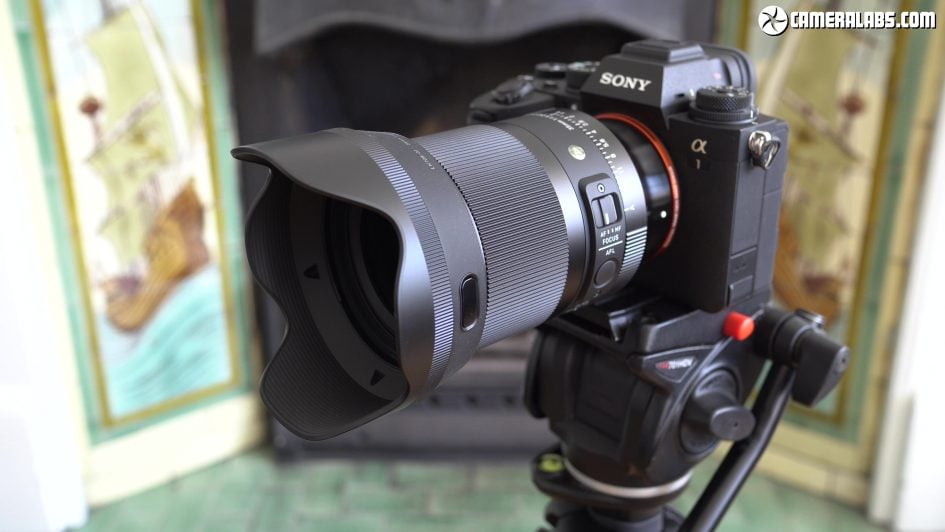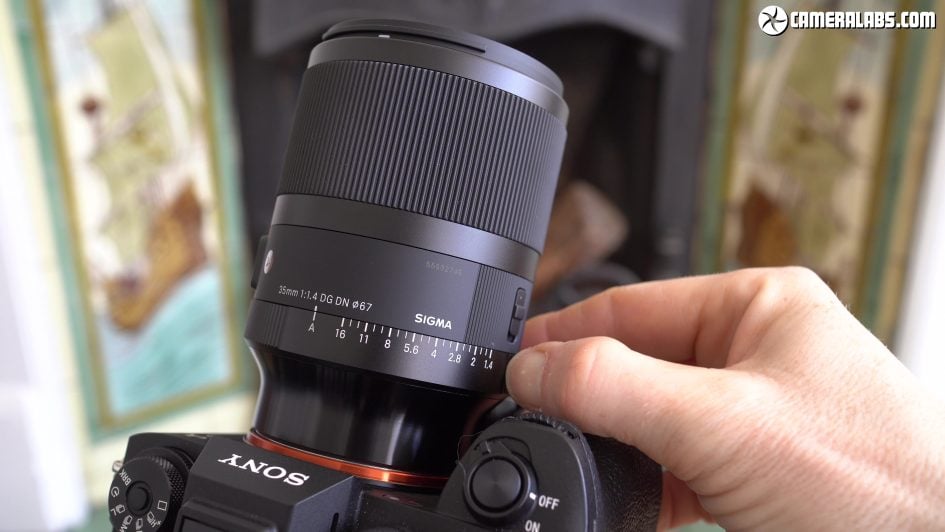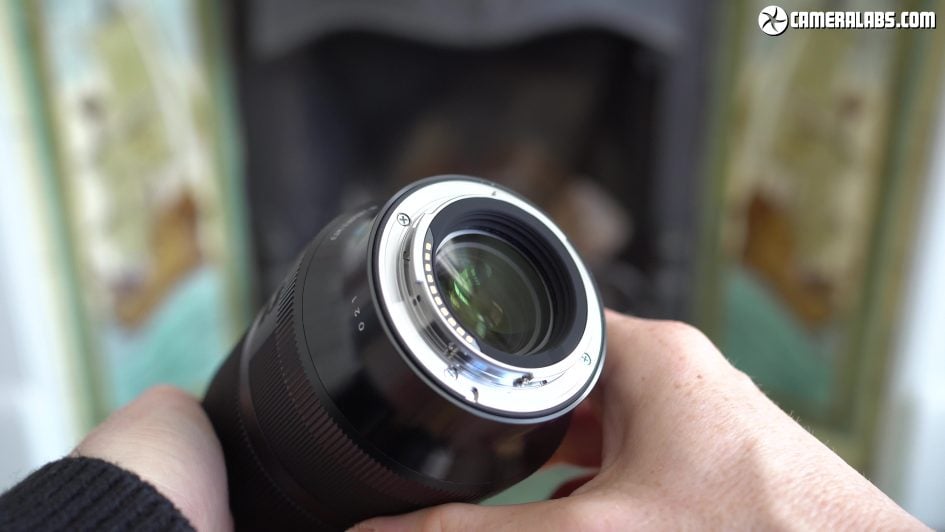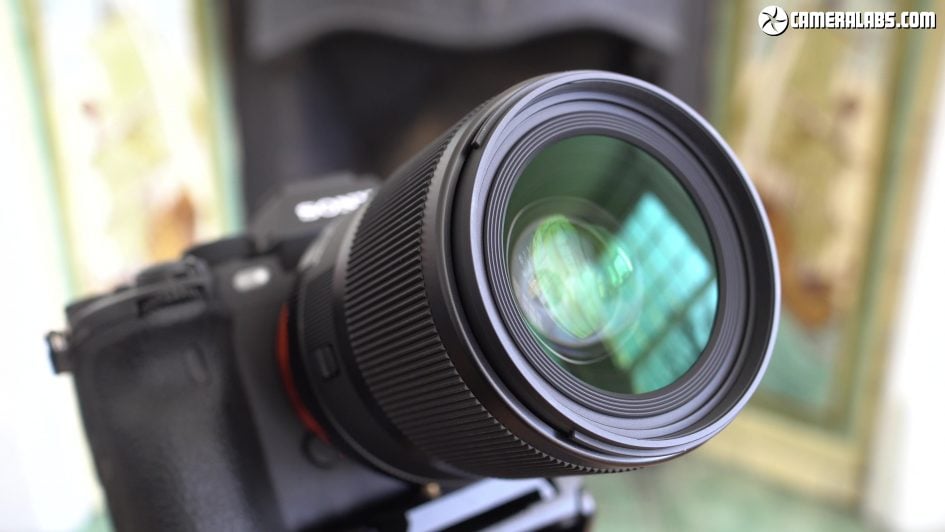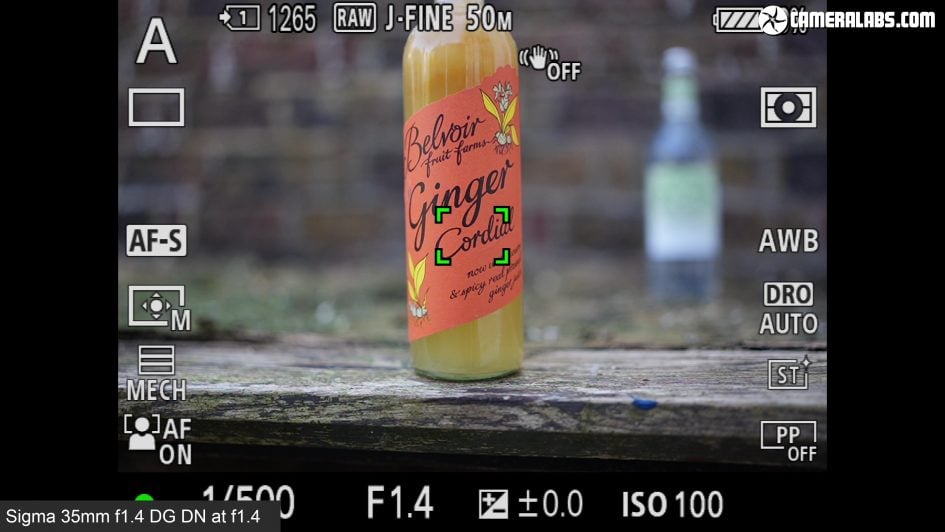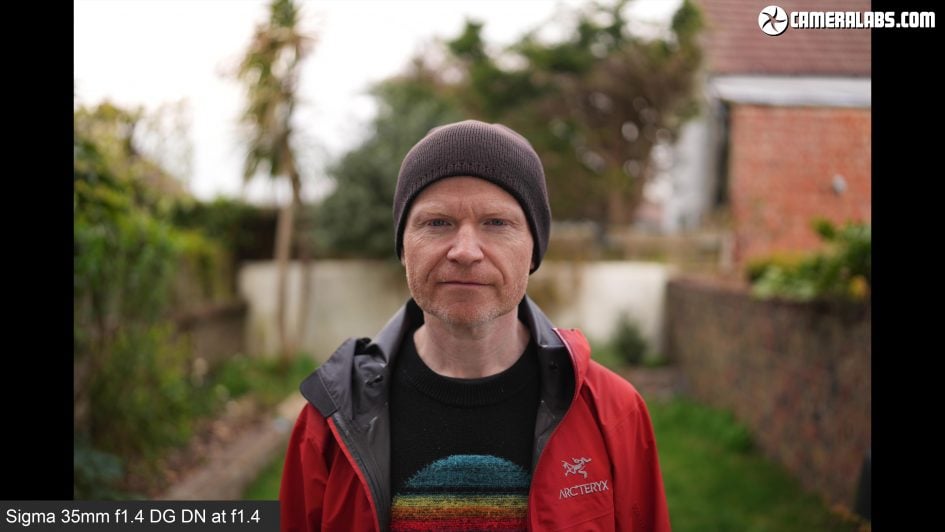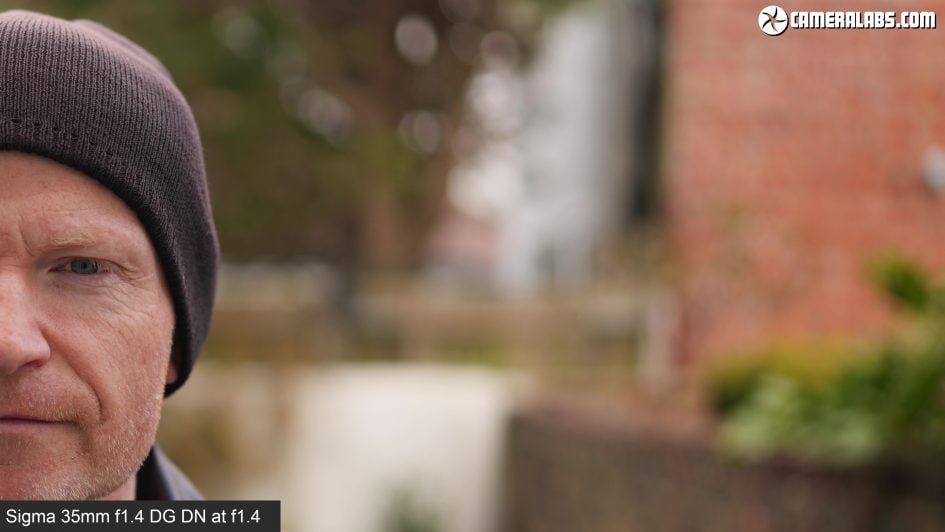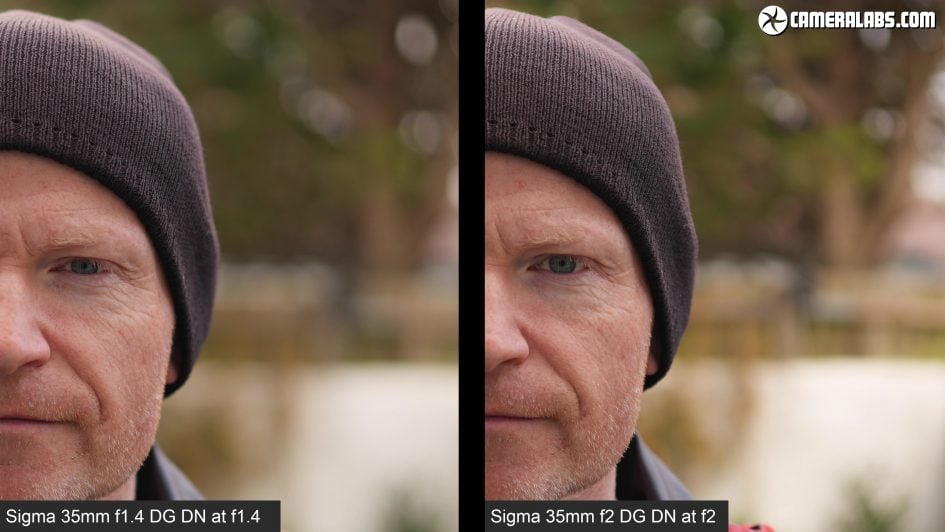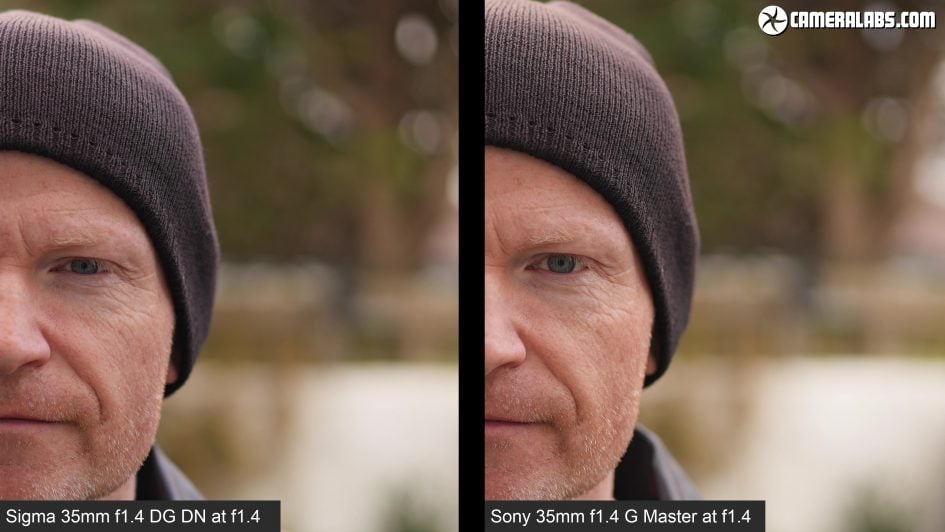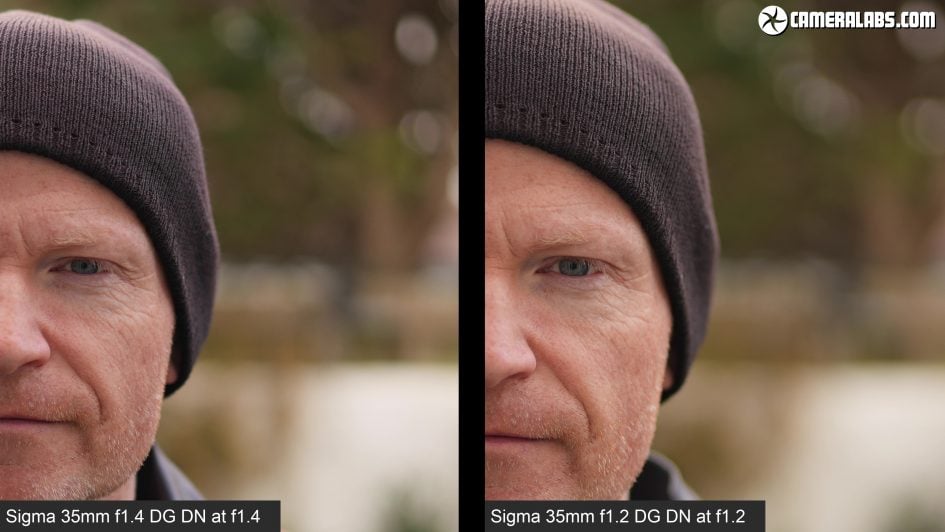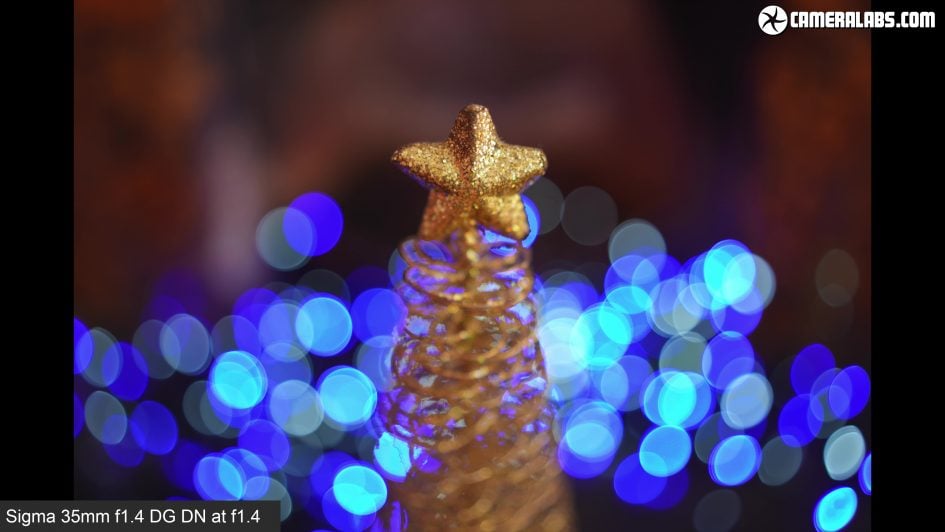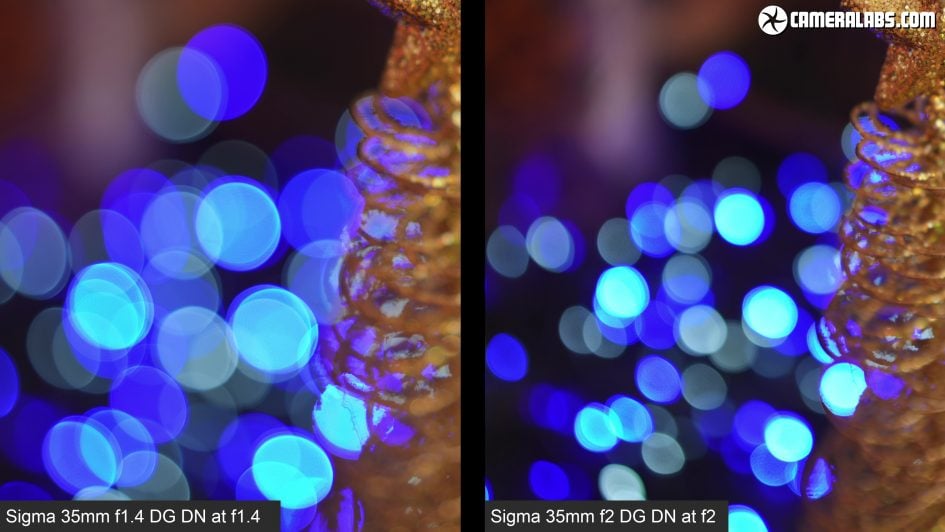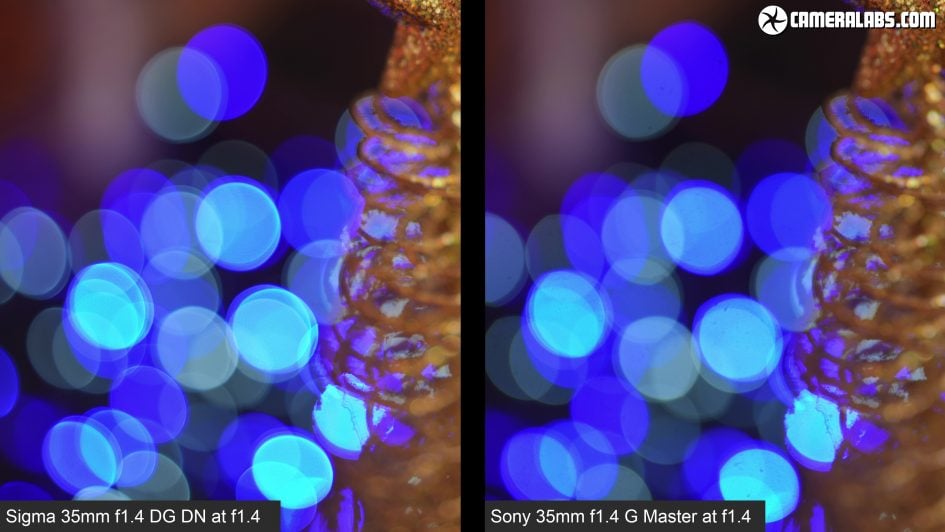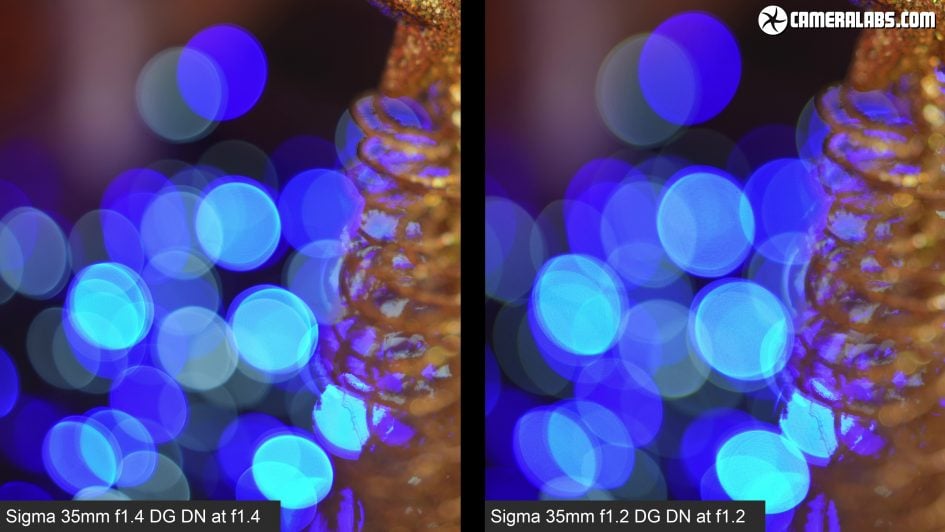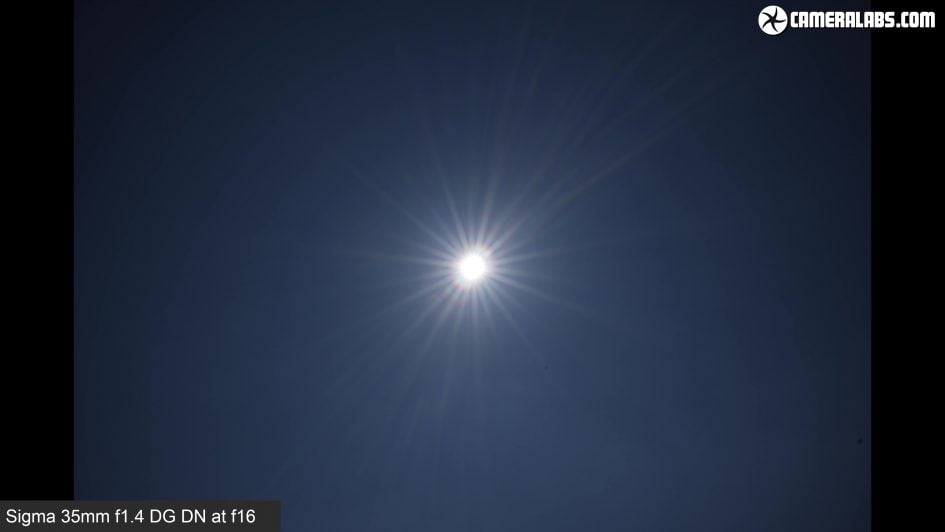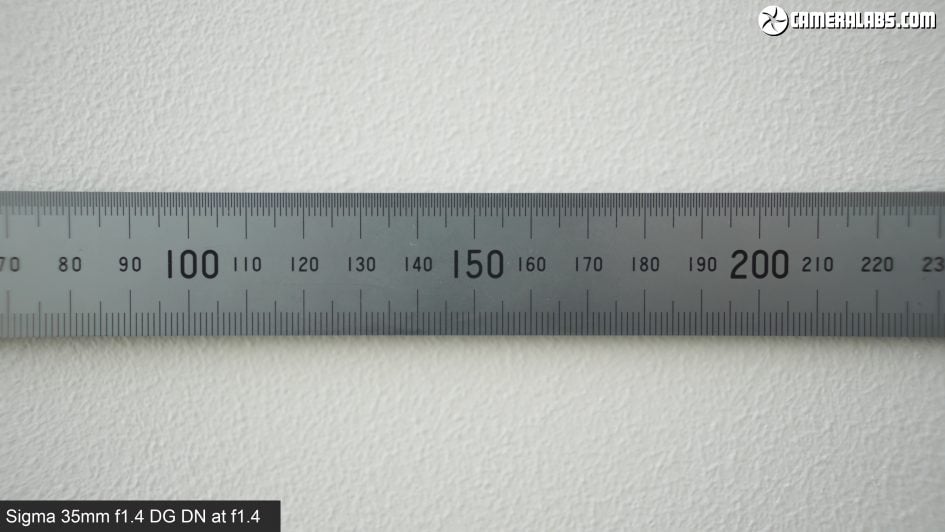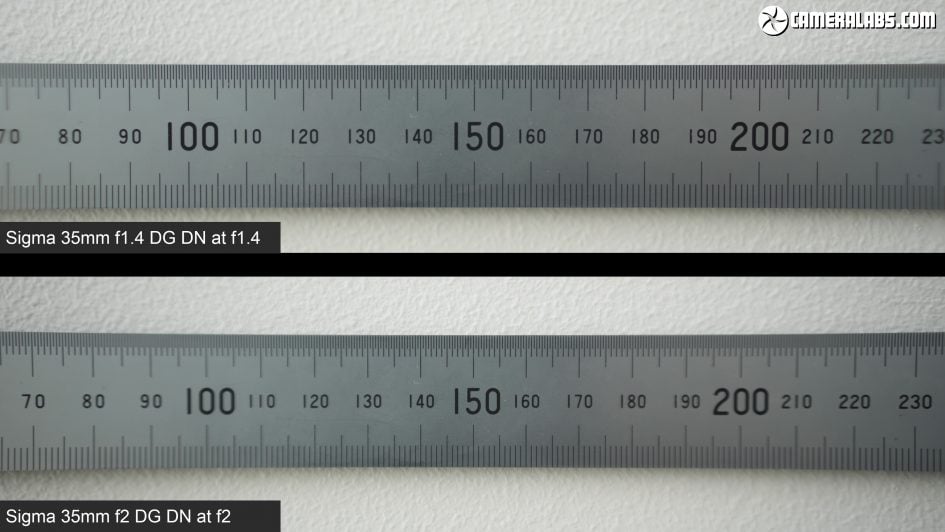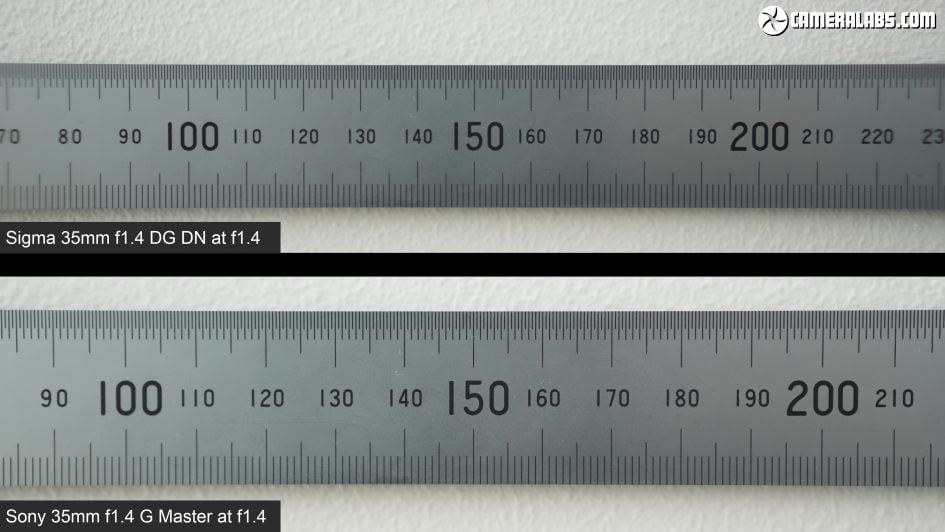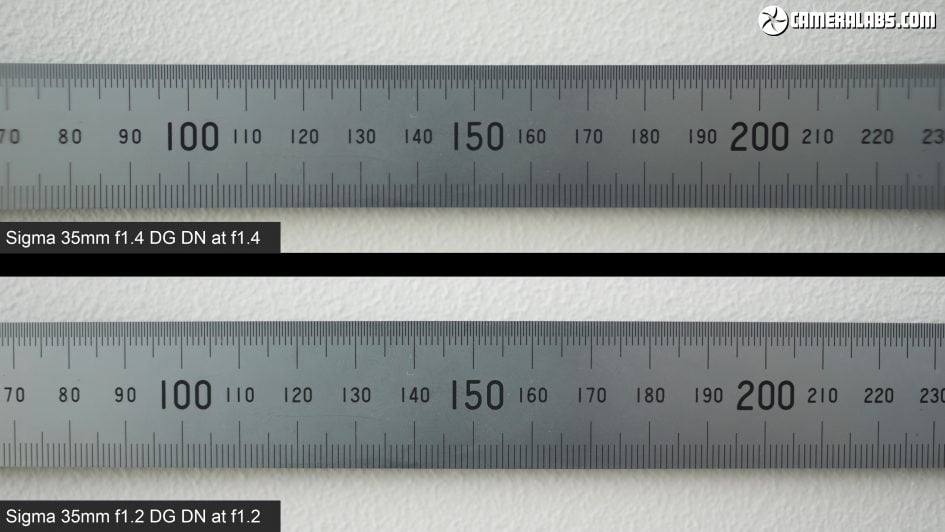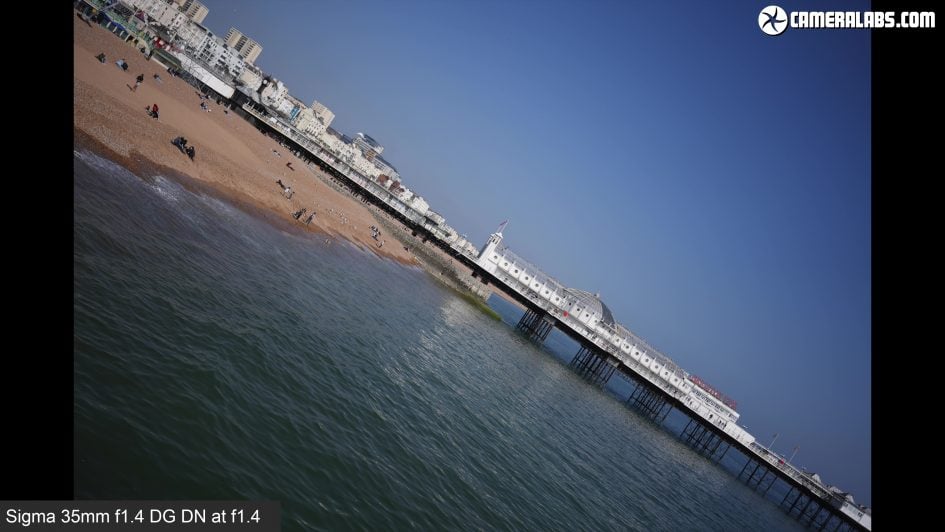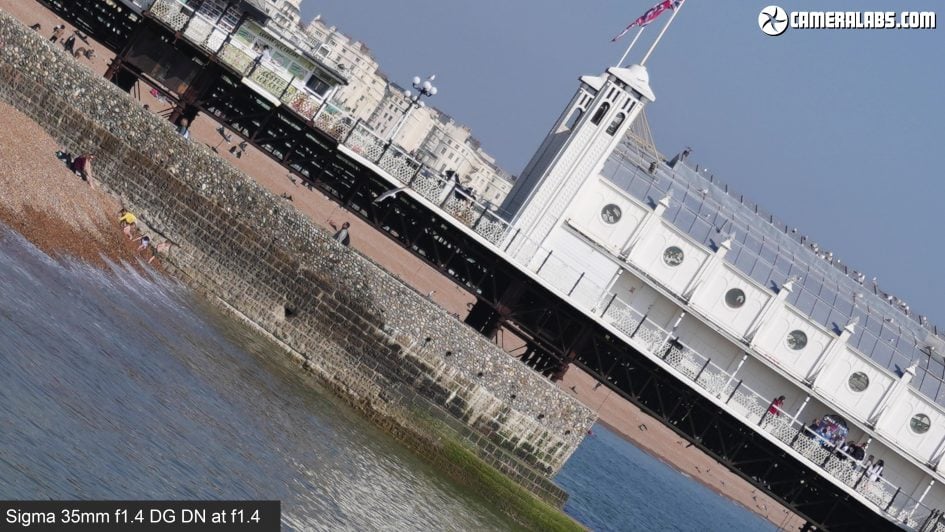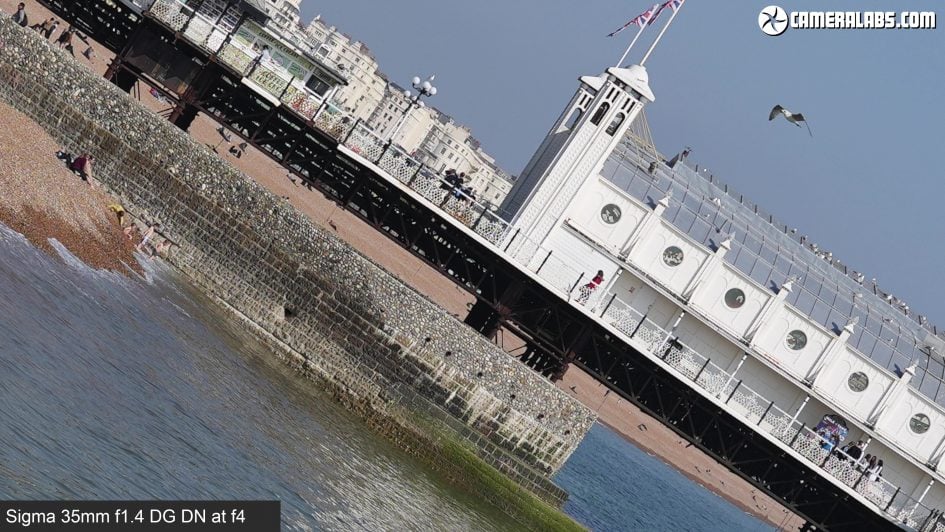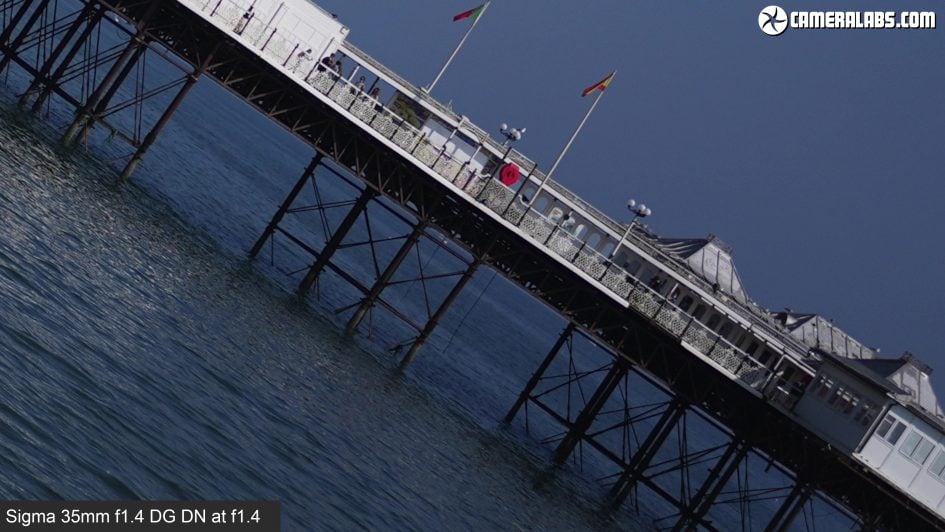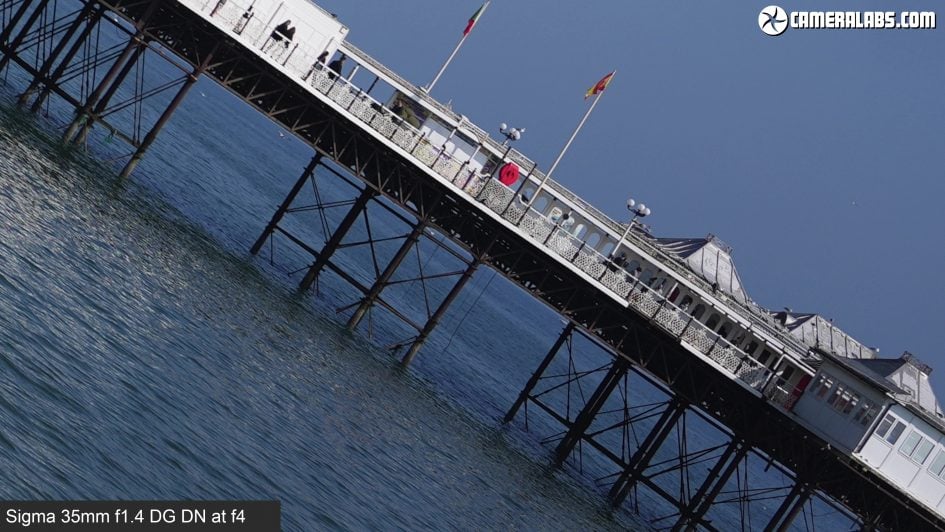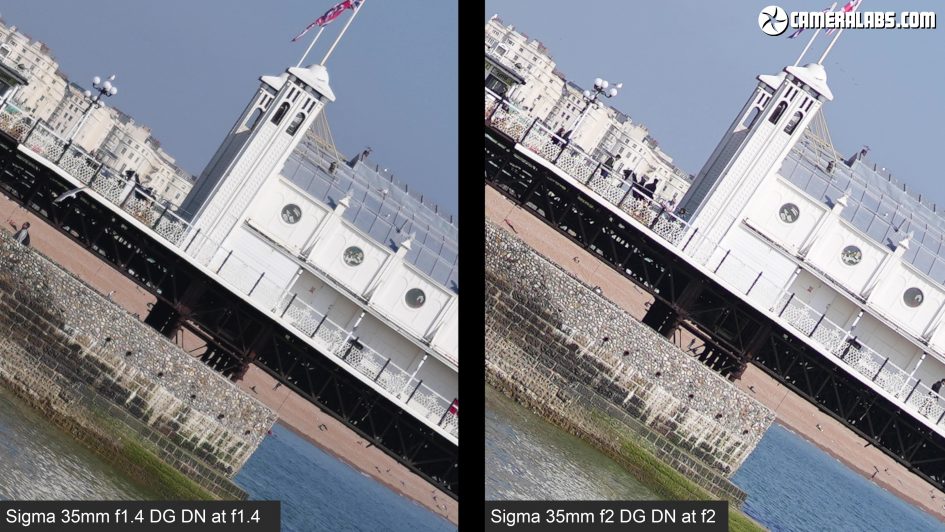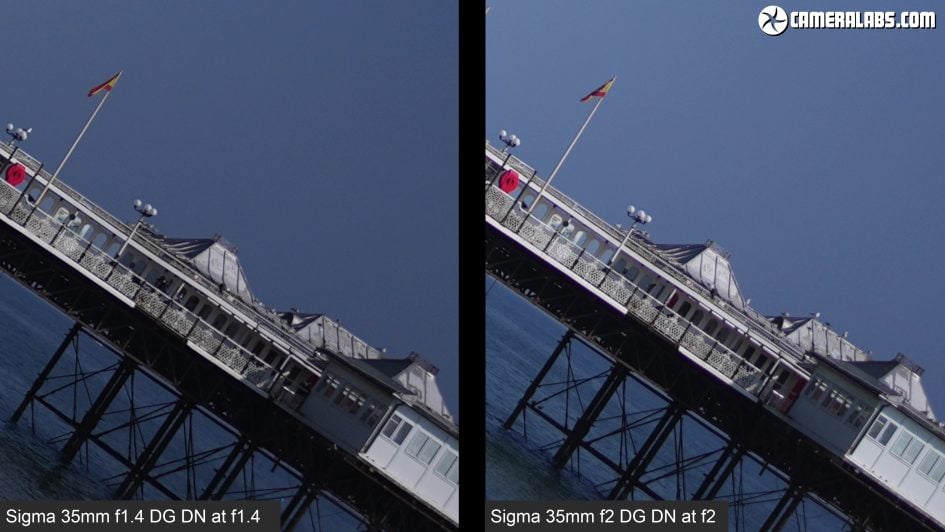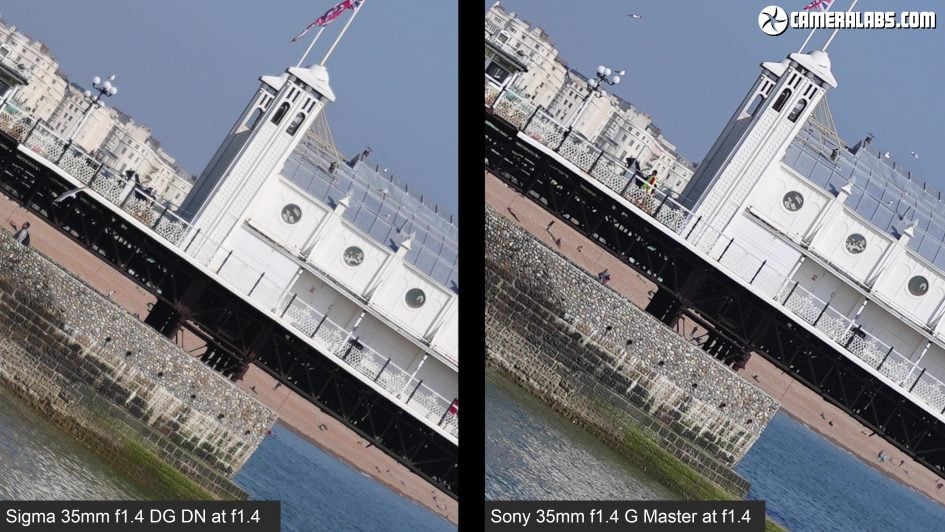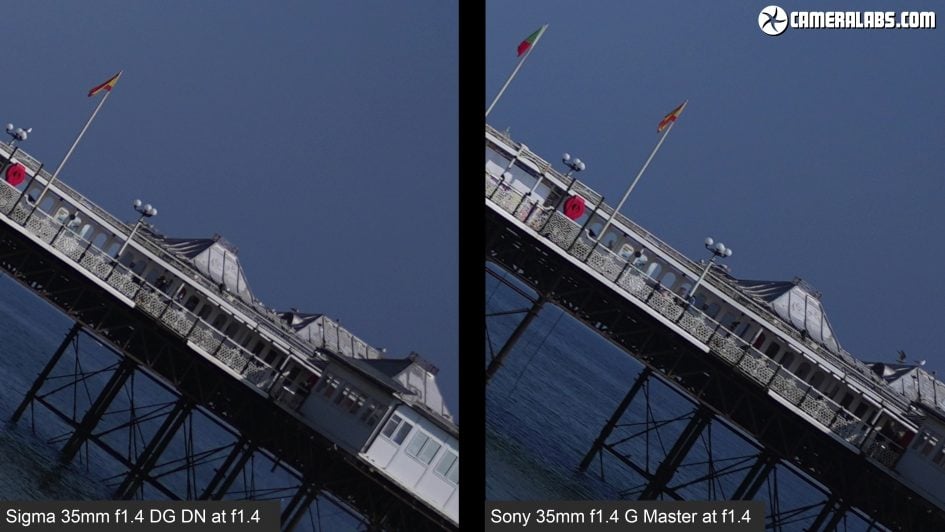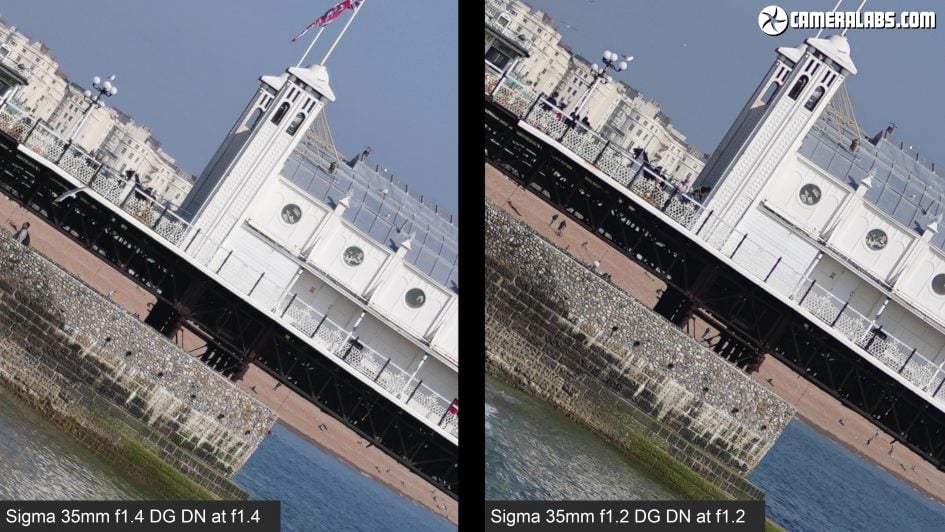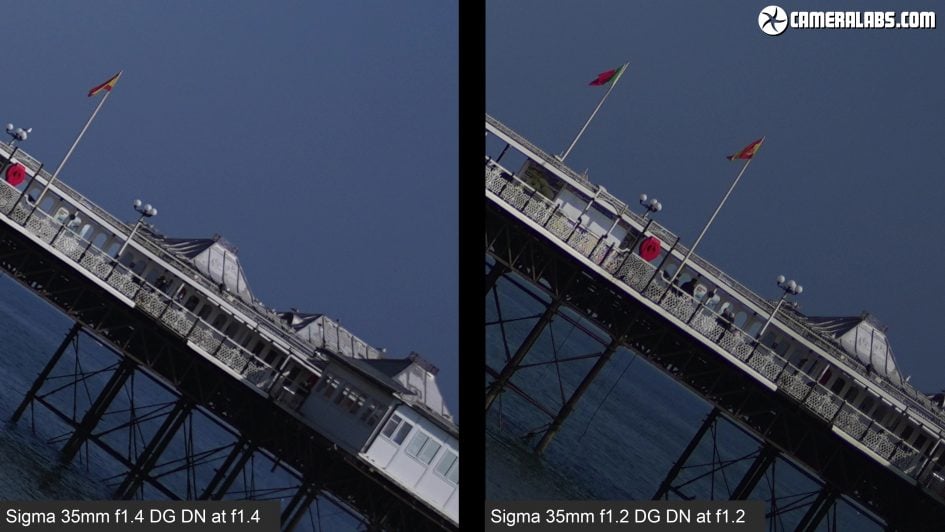Sigma 35mm f1.4 DG DN Art review
-
-
Written by Gordon Laing
Intro
The Sigma 35mm f1.4 DG DN Art is a wide angle prime lens for full-frame mirrorless cameras and, at the time of testing, available in Sony e and Leica L-mount versions; here’s hoping for Canon RF and Nikon Z versions of Sigma’s mirrorless lenses soon.
Announced in April 2021 and costing $899 or 799 pounds, it’s the successor to the 35 1.4 DG HSM, a DSLR lens that launched Sigma’s Art series back in September 2012 – around eight and a half years previously. Optical design, not to mention camera mounts, have come a long way in that time and in 2021 Sigma now offers three 35s in a native mirrorless mount, with the latest 1.4 joining the existing f1.2 and f2 models.
Sigma loaned me a 35 1.4 to test for this review and while they described it as a pre-production sample, the quality and performance was near to final – and the box it came in certainly looked pretty final. As a pre-production sample though, the final models may vary. Find out everything you need to know in my video review below, but as always if you prefer to read the written highlights, keep scrolling!
Sigma has high aspirations for the 35 1.4, so In this review I’ll directly compare it against Sony’s 35 1.4 G Master. Costing $1399, the Sony is a considerable $500 more expensive but widely regarded as one of the best 35s ever made – no pressure there then. Since I’m a thorough kind of guy I’ll also include comparisons against the Sigma 1.2, which at $1499 is the most expensive of the group, and the Sigma f2 which at $639 is the cheapest.
Above: Measuring 76x110mm and weighing 645g, Sigma’s mirrorless 35 1.4 is actually 16mm longer and 20g heavier than the previous DSLR version. That said, if you’re comparing the DSLR version with the built-in e-mount adapter, the new lens becomes 10mm shorter and 110g lighter.
Above: Sony’s 35 1.4 G Master here on the right is actually 14mm shorter than the new Sigma and 120g lighter. Once mounted on a body though they’re in a similar ball-park and you won’t notice much difference in a bag. The undisputed heavy-weight here is the Sigma 35 1.2 on the far right, longer and wider at 88x136mm and around 50% heavier at 1090g – you really know when you’re carrying that one. And finally on the far left, the Sigma 35 f2 is smaller at 70x65mm and roughly half the weight of the two 1.4s at 325g. Oh, and in case you wondered, Sony’s 35 1.8G measures 66x73mm and is lighter than all four here at just 280g.
Above: here’s the Sigma 35 1.4 with its supplied petal lens hood. Note the Sony lens with its hood is almost the same length as the new Sigma without it.
Above: In terms of controls, the Sigma 35 1.4 has a clicky aperture ring running between f1.4 and f16 with a switch to one side locking it in the A position if you prefer body-based control. A switch below the barrel to the other side declicks the aperture ring for smooth and silent operation preferred by videographers. The manual focusing ring is wider than the Sony 35 1.4 and while both turn very smoothly, the Sigma felt a little stiffer and required a longer turn to travel through its focus range; that said I found the Sony easier to manually focus. There’s also a focus hold button that’s customisable on compatible bodies.
Above: Sigma describes the design as dust and splashproof, including a rubber grommet on the mount. You’d expect weather-sealing on a high-end lens, but remember the original DSLR version of the lens was not sealed so this is an important upgrade.
Above: Meanwhile the 35 1.4 employs a 67mm filter thread, the same as the Sony 35 1.4, although unsurprisingly the Sigma 1.2 demands larger 77mm filters while the compact Sigma f2 and Sony 1.8 use 58 and 55mm filters respectively.
Above: In terms of focusing, the Sigma 35 1.4 is fairly swift, although like most Sigma lenses I’ve tested there’s a visible contrast-based hunt at each end to confirm. Set the body to continuous AFC though and the focusing is much faster. In comparison, the Sony 35 1.4 (also in AFS mode on the Alpha 1) is visibly snappier than the Sigma, although again when set to AFC, both lenses focused at a similar speed. That said, Sony does not always support its fastest burst speeds with third party lenses when using continuous autofocus. On the Alpha 1, the 35 1.4 G Master was able to shoot at up to 30fps using the electronic shutter with AFC, whereas the Sigma 35 1.4 slowed to between 12 and 14fps in my tests, giving me roughly half as many frames to play with. Now that’s still lots of pictures, but if you’re buying a Sony body for the fast burst speeds, check for lens restrictions.
Above: Let’s move onto optical quality now, starting with a portrait with the Sigma 35 1.4 at f1.4 on the Alpha 1 using eye detection.
Above: Taking a closer look reveals sharp details around my eyes as well as attractive smooth rendering in the background – an improvement over the old DSLR version of the lens which often suffered from busy bokeh. Viewed in isolation you’d be happy with this result, but I have three more to show you.
Above: Starting with the cheaper Sigma 35 f2 on the right at f2, where you can see it’s a little less crisp on the focused areas of my eyes, while the areas in the background are obviously less blurred and more distinct thanks to the slower f2 aperture. So the pricier 35 1.4 unsurprisingly wins this pairing.
Above: But now let’s switch to the Sony 35 1.4 G Master on the right at f1.4 where it’s clear the Sony is delivering much crisper details with higher contrast too. It almost looks like the Sigma on the left is a little out-of-focus but I reshot this multiple times and chose the best examples for each lens, and as you’ll see in a moment, this performance is reflected in my other tests too. In terms of background rendering, they have slightly different styles but look equally good to me, but in terms of focused detail and contrast, the Sony is simply better at f1.4 and it also delivered a higher hit rate on focusing than the Sigma. But then it’s also $500 more expensive.
Above: And finally for the Sigma 35 1.2 on the right at f1.2, delivering a more magnified view thanks to its slightly longer actual focal length. But look beyond the size difference and again it’s easy to see how this more expensive lens is crisper on the details, similar in fact to the Sony although lacking its ultimate contrast here. Meanwhile the slightly greater magnification and slightly faster aperture are delivering slightly bigger bokeh blobs that are arguably the smoothest of the four lenses. A strong result for the Sigma 1.2, although it’s by far the biggest of the four lenses and the most expensive too, a whole $600 more than the Sigma 35 1.4. Plus the higher price didn’t improve the AF consistency over the Sigma 1.4, with the Sony delivering the best hit-rate, at least in my tests on the Alpha 1.
Above: Now for bokeh blobs and in my video I run through the entire aperture range of the Sigma 35 1.4 from f1.4 to f16, taken from close to its minimum focusing distance of 30cm. Here you can see the new lens puts to rest the bokeh demons of its predecessor, now delivering attractive and well-behaved bokeh blobs with minimal outlining and barely no textures within. Sure there’s inevitable rugby balls in the corners at the maximum aperture, but close it even by one stop and they mostly become circular while the 11-bladed diaphragm maintains a nice mostly rounded shape at f2.8 and f4. The geometric shape becomes more obvious at smaller apertures but overall I’m very happy with these results.
Above: Ok now for a comparison at the maximum apertures of each lens, all shot from the same distance, starting with the more affordable Sigma 35 f2 on the right where there’s a dramatic difference in the size of the bokeh blobs. Looking closely, the blobs on the f2 version on the right are also a little more textured than the 1.4 on the left. I should say the Sigma 35 f2 is actually quite good in its class, but it’s up against some of the best here.
Above: Next up the Sony 35 1.4 G Master at f1.4 which is delivering similarly-sized blobs to the Sigma 35 1.4 which are also mostly bereft of textures within – note any dots on the Sony blobs are due to some dust on the lens, sorry. The Sony blobs also have less outlining which may have you preferring one result over the other, but both lenses here are rendering very attractive blurred areas – a good result for the Sigma given its cheaper price, although note the Sony can focus a bit closer, allowing it to deliver bigger blobs if you prefer.
Above: And finally the Sigma 35 1.2 on the right at 1.2, delivering the largest bokeh blobs of them all from the same distance again thanks to its slightly longer actual focal length coupled with the slightly faster 1.2 aperture. Both lenses show a little outlining which you may or may not like, and arguably the 1.2 blobs have slightly more visible textures within, but I’d be delighted with either – so again a good result for the new 35 1.4 given its lower price.
Above: At the small-end of the aperture scale, here’s a quick look at diffraction spikes on the Sigma 35 1.4 at its minimum aperture of f16. UK skies can be quite hazy, so this isn’t going to be as crisp as other climates, but it bodes well for sunstars and night cityscapes alike.
Above: One last close-up test with each lens focused as close as it would allow when set to manual and with the apertures wide-open. Here’s the Sigma 35 1.4 from about 30cm away where it’s reproducing 162mm across the frame. It’s fairly sharp in the middle but becomes quite soft at the edges where I needed to stop it down to f4 to f5.6 for a good result at the extremes.
Above: For comparison, I’ll put the Sigma 35 1.4 at the top and start with the Sigma 35 f2 at the bottom where the cheaper lens is reproducing 170mm across the frame, fractionally less than the 35 1.4, although the more interesting aspect is how the 35 f2 is a little sharper at the far edges but dips a little in sharpness around the APSC edges. I’ve seen this before on some lenses and it’s always worth checking sharpness around this mid point as well as in the middle and the edges.
Above: Now for the Sony 35 1.4 G Master at the bottom where it’s reproducing 134mm across the frame, delivering the greatest magnification in this foursome, although you will need to manually focus from this distance. More importantly though it’s crisper in the middle and while it softens towards the edges, it’s still ahead of the Sigma 1.4.
Above: And finally the Sigma 35 1.2 at the bottom, reproducing 165mm across the frame, making all three Sigma lenses similar in this regard. The Sigma 1.2 is however sharper than the 1.4 in the middle and maintains this closer to the edges too – and remember this was shot at f1.2 as well. All four lenses improve their edge sharpness when closed, but the two most expensive models are already excellent out of the gate.
Above: And now for my distant landscape scene, taken with the Alpha 1 and angled as always so that details run right into the corners where the lenses struggle the most; I used the default Lens Correction settings which on the Alpha 1 has Distortion set to Off. I’m starting with the Sigma 35 1.4 at f1.4 where I had to manually focus for the best result.
Above: Taking a closer look in the middle shows a fair amount of detail, although at f1.4 it’s lacking the ultimate crispness and contrast of higher-end lenses like the Sony GM or Sigma 1.2.
Above: Stop it down even a little though and you’ll gain sharpness and contrast with the lens peaking around f4 to f5.6.
Above: moving into the corner shows some darkening due to vignetting and again some softness when the aperture is wide-open.
Above: As you close the aperture this improves quickly, and again the best result is around f4 to f5.6 here.
Above: Now for a comparison in the middle with the Sigma 35 1.4 on the left and the Sigma 35 f2 on the right, both at their maximum apertures and zoomed-in for a closer look where they’re both looking quite similar.
Above: Moving into the far corner also shows a similar result when they’re at their maximum apertures and coincidentally both lenses capture almost exactly the same field of view – remember just because the model quotes the same focal length, doesn’t mean the coverage will be identical in practice.
Above: Next on the right is the Sony 35 1.4 G Master, with both lenses at f1.4 and you can clearly see how the Sony is delivering crisper details and higher contrast, avoiding the mild softening effect of the Sigma when shooting at their maximum apertures – plus I could achieve this result using autofocus.
Above: The Sony maintains this lead across the frame, although once you’re looking in the far corners, some of the benefit is lost due to darkening from vignetting. Note the Sony 35 1.4 captures a slightly smaller field-of-view than the Sigma 35 1.4, perhaps due to some geometric correction taking place. Note the Sigma lens exhibited some barrel distortion at distant focus or pincushion close-up, both of which can be reduced with Distortion Compensation on the camera set to Auto.
Above: And finally on the right is the Sigma 35 1.2 at f1.2 and like the 1.4 model on the left, manually focused for the best result; I found both lenses sometimes slightly missed optimal focus on the Alpha 1 when autofocusing wide-open whether in AFS or AFC. Looking closely in the middle shows the 1.2 lens on the right delivering crisper details and higher contrast, just like the Sony in the previous comparison. In some previous tests I found the Sigma 1.2 occasionally lacking, but it may have been down to less than optimal focusing. Get it spot-on and this lens can deliver the goods, but you may need to switch from auto to manual focus to achieve it.
Above: Moving into the corner shows the Sigma 1.2 suffering more from vignetting, but look through it and you’ll see it impressively maintaining sharpness across the frame – and remember this is with the aperture wide-open. Note the Sigma 35 1.2 is delivering a slightly narrower field of view than the other four lenses, and is probably closer to around 38mm. I’m glad I’m able to show this lens at its sharpest here, but again it struggled to perform consistently in my tests with the Alpha 1 in autofocus.
Before wrapping-up my review, a few notes for the videographers out there. Just like for stills, 35mm is an ideal general-purpose length for filming, wide-enough to squeeze in bigger scenes, but not so wide to suffer from distortion. Movie autofocus is smooth, quiet and hassle-free with none of the hunting of AFS in stills, nor any issues with accuracy or repeatability. That said, it’s not an issue with the other three lenses either.
Focus breathing is however an issue for the Sigma 35 1.4 which visibly reduces the field of view as you focus from infinity to the closest distance of around 30cm. It almost appears as if the lens is zooming-in and this can be distracting when pulling focus for video. You may also notice some barrel distortion at infinity gradually becoming pincushion at the closest distance, although enabling Distortion Compensation in the Alpha 1 menus can correct this for stills or video. It’s not alone in focus breathing issues though. The Sigma 35 f2 may not be quite as bad as the 1.4, but it’s not far off either.
Meanwhile Sony’s 35 1.4 G Master, despite acing almost every test, is actually the worst behaved in terms of breathing. Here the reduction in the field of view is greater than the Sigma 35 1.4, although not by a huge amount. The winner of this particular foursome in terms of breathing is the Sigma 35 1.2 which may show a mild reduction in the field of view and require quite a turn of the focusing ring to get from far to near and back again, but it is the mildest offender in terms of breathing here.
Check prices on the Sigma 35mm f1.4 DG DN ART at B&H, WEX UK, Adorama, or Calumet.de. Alternatively get yourself a copy of my In Camera book or treat me to a coffee! Thanks!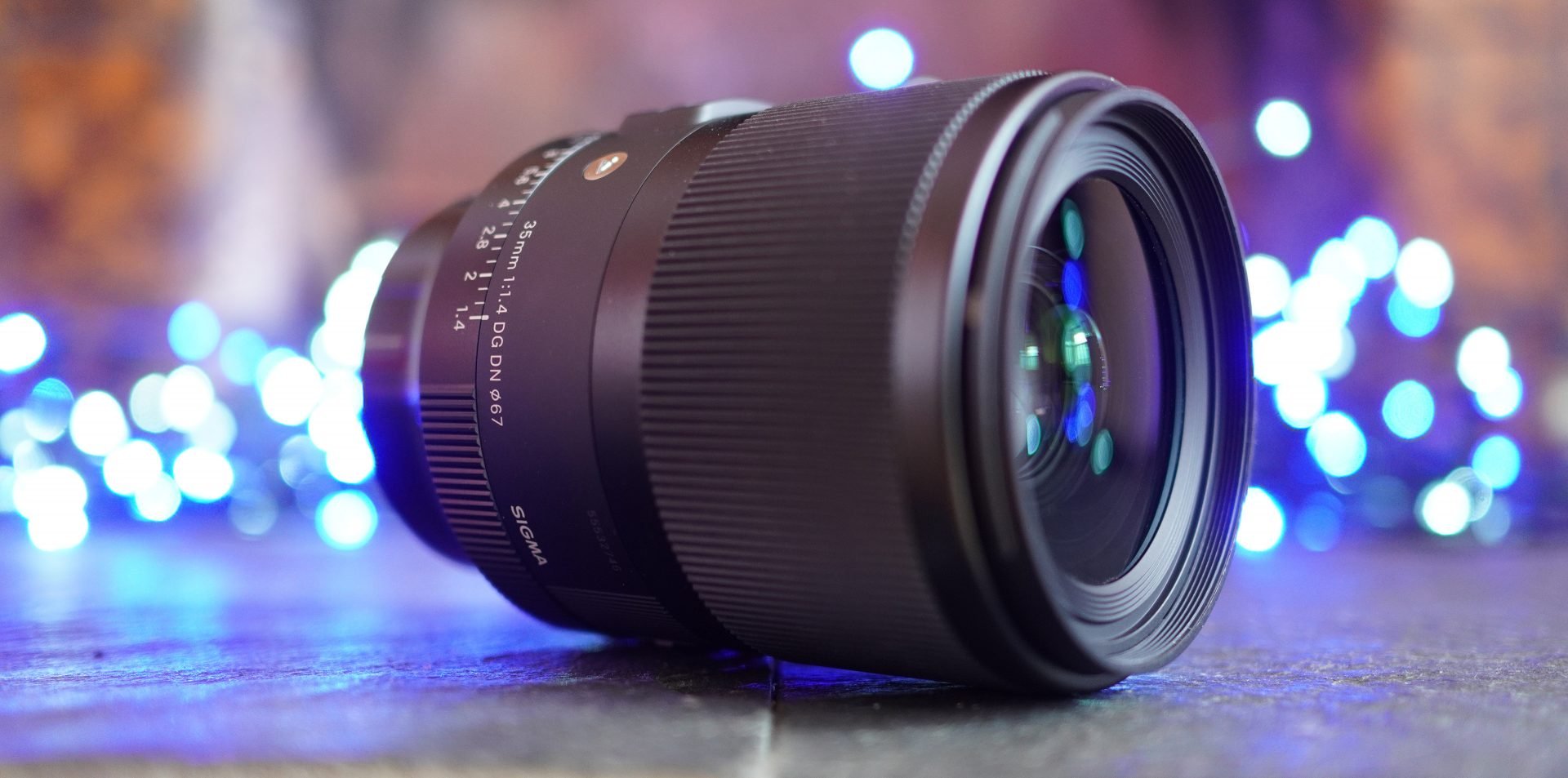
 The Sigma 35mm f1.4 DG DN Art is a quality wide-angle lens for mirrorless cameras that’s capable of attractive rendering and sharp results. In my tests with a pre-production sample, the bokeh in blurred areas was not only a step-up from the original DSLR version, but up there with models costing a lot more. Meanwhile the focused details are okay at f1.4 and become very crisp if you can close the aperture even just one stop to f2. In terms of Sigma’s own native mirrorless lenses, it slots comfortably between the f2 and f1.2 models in terms of price, size and overall quality, so a step-up from the cheaper and more compact model, but a respectful step-back from the flagship f1.2. If you’re an L-mount owner looking for a relatively affordable 35, Sigma has you covered with its three native 35s. Sony owners however have a lot more choice. In my tests the more expensive Sony 35 1.4 G Master may have been similar in rendering style and only a little worse in terms of focus breathing, but delivered visibly crisper and more contrasty results at f1.4, plus its focusing on the Alpha 1 was much more consistent while also supporting the fastest burst speeds in AFC. The G Master is simply the better lens, but it’s also $500 more expensive. Sigma can match its optical quality, but using the similarly-priced 35 1.2 and in my tests it didn’t focus as reliably as the Sony lenses. Interestingly it’s the Sony 35 1.8G which arguably gives the new Sigma 1.4 the greatest competition - it’s a key rival to weigh-up. As a pre-production sample that’s all I can say for now!
The Sigma 35mm f1.4 DG DN Art is a quality wide-angle lens for mirrorless cameras that’s capable of attractive rendering and sharp results. In my tests with a pre-production sample, the bokeh in blurred areas was not only a step-up from the original DSLR version, but up there with models costing a lot more. Meanwhile the focused details are okay at f1.4 and become very crisp if you can close the aperture even just one stop to f2. In terms of Sigma’s own native mirrorless lenses, it slots comfortably between the f2 and f1.2 models in terms of price, size and overall quality, so a step-up from the cheaper and more compact model, but a respectful step-back from the flagship f1.2. If you’re an L-mount owner looking for a relatively affordable 35, Sigma has you covered with its three native 35s. Sony owners however have a lot more choice. In my tests the more expensive Sony 35 1.4 G Master may have been similar in rendering style and only a little worse in terms of focus breathing, but delivered visibly crisper and more contrasty results at f1.4, plus its focusing on the Alpha 1 was much more consistent while also supporting the fastest burst speeds in AFC. The G Master is simply the better lens, but it’s also $500 more expensive. Sigma can match its optical quality, but using the similarly-priced 35 1.2 and in my tests it didn’t focus as reliably as the Sony lenses. Interestingly it’s the Sony 35 1.8G which arguably gives the new Sigma 1.4 the greatest competition - it’s a key rival to weigh-up. As a pre-production sample that’s all I can say for now!